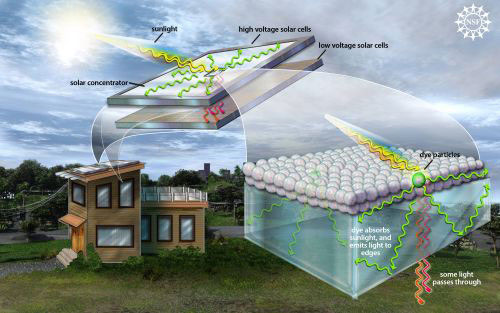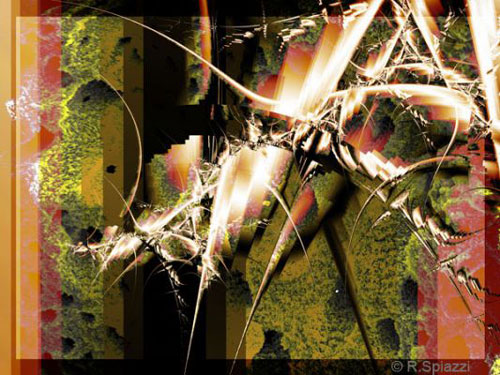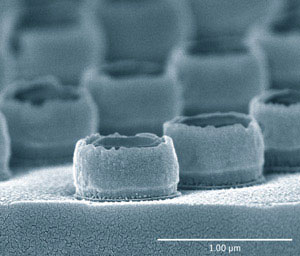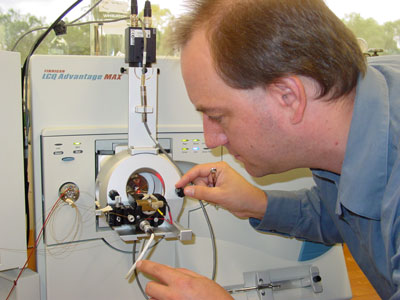Asylum Research offers AFM in Biology Class April 13-15, 2011
The class is open to all Atomic Force Microscopy users that want to increase their knowledge of AFM in biology and life sciences.
Feb 14th, 2011
Read more
The class is open to all Atomic Force Microscopy users that want to increase their knowledge of AFM in biology and life sciences.
Feb 14th, 2011
Read more easyJet, the UK's largest airline, today announced that it is the first commercial airline to trial a revolutionary nanotechnology coating on its aircraft aimed at reducing drag and increasing fuel efficiency.
easyJet, the UK's largest airline, today announced that it is the first commercial airline to trial a revolutionary nanotechnology coating on its aircraft aimed at reducing drag and increasing fuel efficiency.
Feb 14th, 2011
Read more This booklet presents basic information about the OECD Nanosafety work for the public over the past five years since 2006.
This booklet presents basic information about the OECD Nanosafety work for the public over the past five years since 2006.
Feb 14th, 2011
Read more With support from the National Science Foundation (NSF), researchers are creating solar cells that are light, flexible, efficient and - often the biggest obstacle - affordable.
With support from the National Science Foundation (NSF), researchers are creating solar cells that are light, flexible, efficient and - often the biggest obstacle - affordable.
Feb 14th, 2011
Read more During about 30 percent of all heart attacks, the patient experiences no symptoms. However, unmistakable signs of the attack remain in the bloodstream for days. MIT researchers, working with Massachusetts General Hospital's Cardiovascular Research Center, have now designed a tiny implant that can detect those signs, which could help doctors more rapidly determine whether a patient has had a heart attack.
During about 30 percent of all heart attacks, the patient experiences no symptoms. However, unmistakable signs of the attack remain in the bloodstream for days. MIT researchers, working with Massachusetts General Hospital's Cardiovascular Research Center, have now designed a tiny implant that can detect those signs, which could help doctors more rapidly determine whether a patient has had a heart attack.
Feb 14th, 2011
Read moreEADS Innovation Works, the Group's corporate research arm, is working with university researchers to find a new solid state storage system for hydrogen. This technology would make it possible to use hydrogen as a clean alternative to traditional hydrocarbon-based fuels in aeroplane and car engines.
Feb 14th, 2011
Read moreIn a new study, researchers from UCLA's Henry Samueli School of Engineering and Applied Science and from the materials division of Australia's University of Queensland show the promise of surface-conduction channels in topological insulator nanoribbons made of bismuth telluride and demonstrate that surface states in these nanoribbons are "tunable" - able to be turned on and off depending on the position of the Fermi level.
Feb 13th, 2011
Read moreAn international team of researchers has discovered a new class of magnetic superhalogens - a class of atomic clusters able to exhibit unusual stability at a specific size and composition, which may be used to advance materials science by allowing scientists to create a new class of salts with magnetic and super-oxidizing properties not previously found.
Feb 11th, 2011
Read moreThink piece describes new approach to documenting results of scientific research.
Feb 11th, 2011
Read more The worldwide competition NanoArt 2011 is open to all artists 18 years and older. The online exhibition will open for public in April, 2011. Winners will be notified and published online on May 31, 2011.
The worldwide competition NanoArt 2011 is open to all artists 18 years and older. The online exhibition will open for public in April, 2011. Winners will be notified and published online on May 31, 2011.
Feb 11th, 2011
Read moreThe detection of circulating tumor cells is an emerging technique that can allow oncologists to monitor patients with cancer for metastasis or to evaluate the progress of their treatment. The gold particles, which are embedded with dyes allowing their detection by laser spectroscopy, could enhance this technique's specificity by reducing the number of false positives.
Feb 11th, 2011
Read moreMysterious expanding ice crystals in the moons of Saturn and Neptune may be of interest to future developers of microelectronics. Neutron scattering has discovered that methanol crystals that may be found in outer solar system 'ice lavas' have unusual expansion properties. The unexpected finding by a British planetary geologist will interest developers of nano-switches - single atom thick valves used in nanoelectronics.
Feb 10th, 2011
Read more A template-based coating technique allows the production of gapped nanostructures over large areas
A template-based coating technique allows the production of gapped nanostructures over large areas
Feb 10th, 2011
Read moreNew technology has made it possible to examine living cells in a microscope while at the same time collecting information that can be used to create mathematical models of the cells' behaviour - a new field of research known as 'systems microscopy'.
Feb 10th, 2011
Read moreWhile there are many methods currently being used that can detect these threats, none allow for the unique fingerprinting of threat agents at trace levels. A research team at the U.S. Naval Research Laboratory, Electronic Science and Technology Division, has overcome this limitation with surface enhanced Raman scattering (SERS) using optically stimulated plasmon oscillations in nanostructured substrates.
Feb 10th, 2011
Read more Two new, high-powered mass spectrometers worth a total of more than $2 million will enable University at Buffalo scientists to conduct a variety of health and environmental studies without outsourcing lab work to institutions outside of Western New York.
Two new, high-powered mass spectrometers worth a total of more than $2 million will enable University at Buffalo scientists to conduct a variety of health and environmental studies without outsourcing lab work to institutions outside of Western New York.
Feb 10th, 2011
Read more